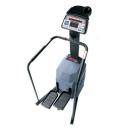Cholesterol is a type of fat (lipid) made by the body. It’s essential for good health and is found in every cell in the body. However, a high cholesterol level in the blood (hypercholesterolaemia) is associated with an increased risk of coronary heart disease (CHD).
Coronary Heart Disease is caused by blood vessels becoming narrowed with fatty deposits called plaques, which cholesterol contributes to. The narrowed blood vessels reduce blood flow to the heart. This can result in angina (chest pain) or, if the vessel is blocked completely, a heart attack.
High cholesterol can also increase the risk of other conditions, depending on which blood vessels are narrowed or blocked. These include stroke if the blood supply to part of the brain is reduced. There is also a risk of peripheral vascular disease. This is caused by narrowed blood vessels in the limbs, particularly the legs. It may result in leg pain, ulcers, and infections.
Cholesterol is transported around the body in the blood attached to a protein. This fat-protein combination is called a lipoprotein. Lipoproteins can be high density (HDL), low density (LDL) or very low density (VLDL), depending on how much protein there is in relation to fat.
In order to estimate the risk of a person getting CHD, doctors look at the ratio between total cholesterol and HDL (”good” cholesterol), called the TC:HDL ratio. A lower ratio is desirable, indicating that the level of HDL is high.
Measuring cholesterol involves a simple blood test. A blood sample may be taken either by using a needle and a syringe, or by using a finger prick. This may be done at a GP’s surgery, at a hospital appointment, or as part of a health assessment examination.
For many years doctors have been assessing the role cholesterol plays in health by referring to the total cholesterol level.
A Total Cholesterol (TC) in excess on 5.5mmol/L is itself a risk factor for heart disease. But knowing your Total Cholesterol level is NOT enough.
To fully understand the effect of cholesterol has on your risk profile, you must also know the relationship between the Total Cholesterol and HDL Cholesterol. This is TC: HDL
|
Profile
|
TC:HDL ratio
|
|
Ideal Range
|
< 3.5
|
|
Acceptable Range
|
3.5 - 5.5
|
|
Needing Attention
|
> 5.5
|
An individual with a TC of 5.4mmol/l and HDL of 1.80mmol/l will have a TC:HDL ration of 3.0 which requires no attention. However, a person with a TC of 5.4mmol/l and HDL of 0.77mmol/l has a TC:HDL ratio of 7.0 which does require attention.
An HDL cholesterol level less than 1.0 mmo1/l is also considered a risk factor for the heart disease. Your aim is to decrease you ratio by increasing your HDL Cholesterol and decreasing your Total Cholesterol.
What is a good TC: HDL ratio?
Ideal Ratio:
Less than 3.5 - is associated with a less than half the average risk of developing heart disease.
Average Ratio:
3.5 - 5.0 - is associated with an average risk of developing heart disease - a 25% chance by the age of 60.
Marginal Ratio:
Between 4.5 and 9.6 - is associated with twice the average risk of development heart disease by the age of 60 - a 50% chance.
Dangerous Ratio:
Between 7.0 and 15.0 - is associated with tripled average risk for developing heart disease by the age of 60 years.
Anyone who has any cardiovascular disease, such as coronary heart disease, peripheral vascular disease (disease in the blood vessels that supply the limbs) or stroke, should have their cholesterol measured by a doctor.
Anyone, even children, with a family history of familial hypercholesterolaemia should have their cholesterol measured.
Anyone aged 35 or over should consider having their cholesterol measured if they have one or more of the following risk factors: family history of early heart disease, diabetes, high blood pressure, smoking.
A healthy lifestyle - exercising on most days, eating a low fat diet, not smoking and drinking alcohol within the recommended limits - will help reduce your risk of coronary heart disease.
source: bupa




